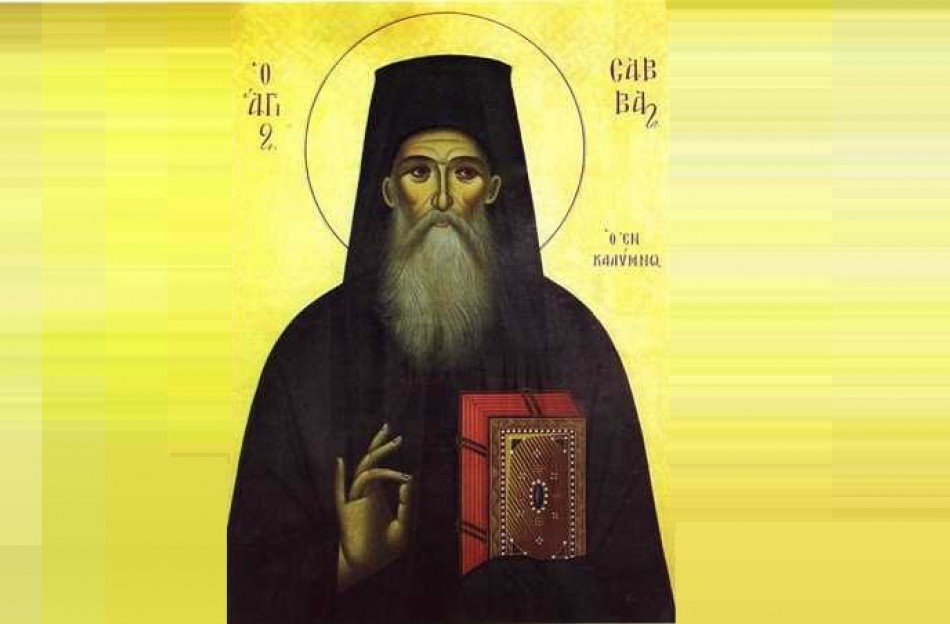Saint Savvas was born in 1862 in Herakleitsa, Eastern Thrace. His parents, Constantinos and Smaragda, gave him the name Basil and raised him by Christian principles. At the age of twelve, Basil realized that he had to follow the path of monasticism. So, he visited Jerusalem, Mount Athos, Patmos and Aegina.
In Mount Athos he entered St. Anne’s Skete, where for twelve years he lived and studied in solitary life with constant prayer and rigorous exercise. In the Holy Land he entered the monastery of St. George Hozeva, where after serving for a three-year period as a novice, living a virtuous life, he was tonsured a monk (1890).
In 1902, he was ordained a deacon and the next year a presbyter.
Until 1906, he was the pastor of the Holy Cross Theological School. There he met a great ecclesiastical figure, the then Archimandrite Chrysostomos Papadopoulos, and later Archbishop of Athens and professor at the University, who deeply appreciated Venerable Savvas.
Shortly afterwards, in 1907 he returned to the monastery of St. George Hozeva, where he led an austere life, with perfect obedience, extreme humility and deprivation of all material goods, while sleeping on the ground, fulfilling the patristic text: “the landless monk, the soaring eagle”.
The year 1916, he returned to Greece. He went to Patmos, the holy island of Revelation, where he lived for two years. There he learned that Saint Nektarios was looking for him, so he travelled to Aegina to meet him. In Aegina he served the Saint with self-denial and devotion until the day of the latter’s death. Venerable Savvas’ cohabitation with Saint Nektarios, the Metropolitan of Pentapolis, helped him to ascend rapidly but steadily on a spirituality level. But the time for the Saint to leave Aegina and depart for Kalymnos had come. After visiting the monasteries and hermitages of that island, he ended up in the Convent of All Saints. This is where he began a vibrant spiritual life and activity.
He was lenient and merciful with the sins of others, but he did not tolerate blasphemy and condemnation. He often wept and eagerly asked for the repentance of his spiritual children. He taught by word of mouth, but mainly by his example. He loved both God and people. He assisted widows and orphans and supported anyone in need. His love was sincere and genuine. He didn’t love money. He never carried any money. He gave the money he was given for his hagiography and the sacraments, to the poor and needy.
He fell asleep on April 7, 1948.
Ten years after the dormition of Venerable Savvas, his holy relics were translated on April 7, 1957, by Metropolitan Isidoros of Leros, Kalymnos and Astypalaia, in the presence of a multitude.
The sacred relic of the Venerable was moved in a larnax to the chapel of Saint Sava the Sanctified, and his canonization took place by the Patriarchal Synod of 19 February 1992.
At the end of his life the Saint suffered from various painful illnesses, which were due to the extreme forms of self-restraint he practiced. But he “took advantage” of the ordeal with endurance, and God granted him the fragrance of his body. The way he dealt with his illnesses is typical. He said: “This, my child, will save us, we did nothing else. This is the good that will take us to Paradise. God is great”. His word, his life attitude, proves why God manifested His holiness with such heavenly fragrance.
